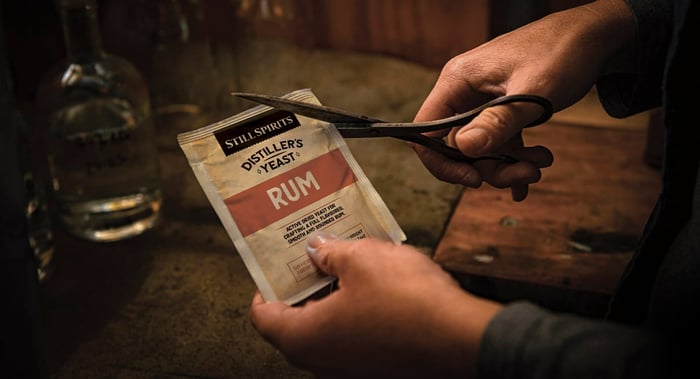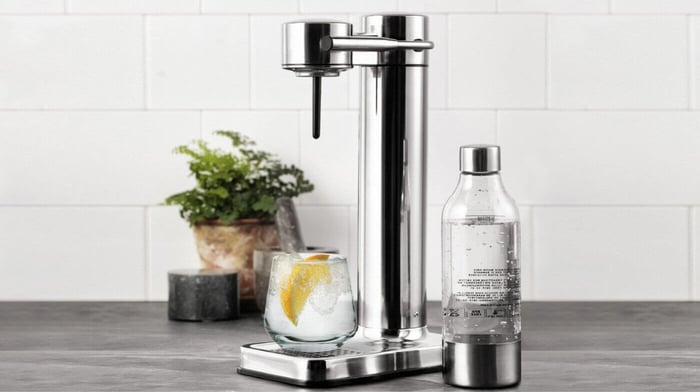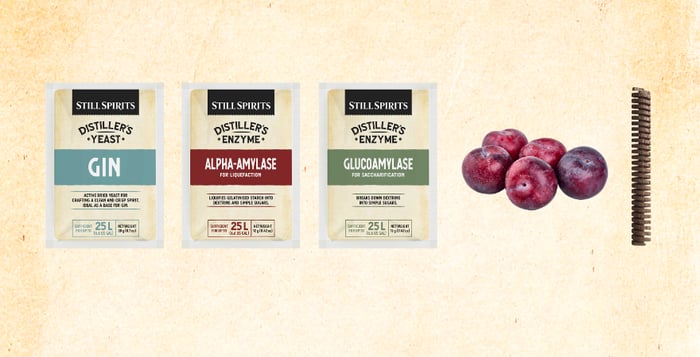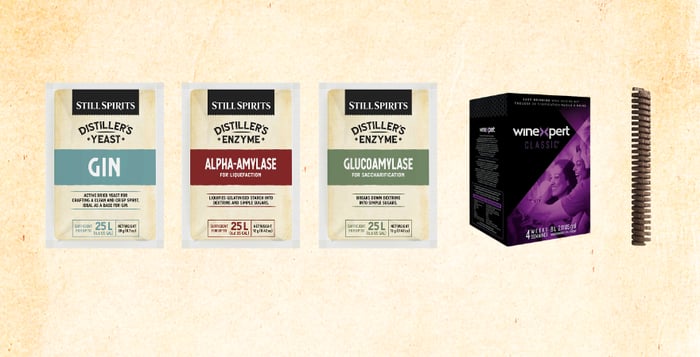Ever wondered how to make rum? This distinctive and richly flavoured spirit is easier to make than you might think! Try our recipe for a distiller's rum wash below.
As with other distilled spirits, the tell-tale characteristics of different rum varieties are dependent on many factors such as the yeast strain used, the method of distillation, and the ageing conditions. It is most commonly made from molasses, although some varieties include brown sugar or sugarcane juice. Today we're going to cover how to make rum from blackstrap molasses. Once distilled, you'll make a light colourless rum that can be made into dark rum or spiced rum if you wish.
White rum does not undergo any aging process, however, once distilled and diluted to 40% ABV (80 proof), it is best to leave it for a few days minimum so the flavours can stabilise. Dark rum is aged in oak barrels or on oak chips/spirals to provide a richer flavour. The oak also contributes to the colour of the final spirit.
Ingredients:
- 9.5 kg (20.9 lb) – Blackstrap Molasses
- 20 g Distillers Yeast - Rum
- 12 g Distillers Enzyme - Glucoamylase (optional)
- 50 g Distillers Nutrient - Dark Spirits
- Turbo Clear (Optional)
- 6-8 L Medium Toast Oak Barrel, new or used for rum or Oak Chips or Spirals (for dark rum)
You can find all of these ingredients at your local home brew store.
Instructions:
- Half fill your cleaned and sanitised fermenter (30 L capacity) with water at approximately 50°C (104°F), then add in the blackstrap molasses while stirring vigorously to dissolve. (Note that the wash will become very viscous, so if it becomes too difficult to stir you should add more hot water, providing the total volume does not exceed 25 L).
- Once the molasses is fully dissolved, top up the solution to a final volume of 25 L (if required), aiming for a liquid temperature of 30-35°C (86-95°F).
- Take your Distiller’s Nutrient and shake it well. For up to 12% ABV, measure out 50 g (1.8 oz) or see the instructions on the label or the Distiller’s Nutrient – Dark Spirits page in the Distiller’s Range booklet for further measuring unit options.
- Depending upon the sugar profile of your molasses, there may be a yield benefit in adding Distiller’s Enzyme – Glucoamylase during your fermentation, although any increase in yield will be offset by a reduction in the flavour quality of your rum. If you would like to try for a higher yield, you can add the Distiller’s Enzyme now along with your measured out Distiller’s Nutrient, before stirring to dissolve thoroughly using your sterilised spoon.
- Ensuring the temperature is below 35°C (95°F), take your Rum Distiller’s Yeast and add directly to the fermentation vessel, fit your lid and airlock (half filled with sterile/boiled water) and leave to ferment at 20-34°C (68-93°F) ambient temperature for optimum performance and quality. (Note that warmer fermentation temperatures will yield fuller flavoured, fruitier rum spirit, whereas lower temperatures will yield a cleaner, lighter rum). If you chose to include Distiller’s Enzyme – Glucoamylase, best results will be achieved fermenting at 30-34°C (86-93°F).
- Leave your molasses wash to ferment at the appropriate temperature. Note that there may be some foaming at the liquids surface – this is why a 30 L capacity vessel is recommended for a 25 L volume.
- Once your airlock stops bubbling, this indicates fermentation is complete. This should happen within 1-2 weeks, depending upon the fermentation temperature. if using a hydrometer, the gravity reading should have stabilised.
- Once fermentation is complete you should leave to stand for 2-3 days to allow the yeast and any other solids to settle out to the bottom of the vessel. Still Spirits Turbo Clear can be used here to speed up the clarification process.
- You are now ready to distil your wash to make spirit. The wash should be siphoned into your still to leave behind the sediment. For the highest quality rum we recommend using a pot still such as the T500 Alembic Pot Still. (Note that use of a Column Still such as T500 with Condenser Column can be used, but the saddles should be removed from the column to prevent the reflux action from rectifying your rum into a cleaner spirit). Please refer to the instruction manual for your distillation unit for detailed instructions on distilling your spirit.
- After distillation you will be left with a richly flavoured but white coloured spirit.
- For white rum, dilute your spirit to 40% ABV (80 proof) and leave it for a few days for the flavours to stabilise
- For dark rum, you should age your rum on oak, either by filling into a 6-8 L medium toast oak barrel (new, or used previously for rum), or by adding 100g medium toast oak chips to your rum for a faster infusion. During ageing, you should taste your rum regularly until your desired level of oak flavour is achieved. If you wish, you can also add a spirit stable caramel colouring like our Profile Range Distiller's Caramel, to turn your golden coloured oak aged rum into a genuine-looking dark spirit.
- After aging the spirit, you can add spices such as vanilla, peppercorns, cinnamon, allspice, cloves and nutmeg to create a spiced rum. Experiment with small amounts until you reach your desired flavour profile.
Head to your local Still Spirits stockist to pick up your ingredients and get distilling today!
Don't forget to share your creations with us on our Facebook page or tag us on Instagram. As always, if you have any questions, please feel free to contact us via social media, leave a comment below, or send us a message directly here.





